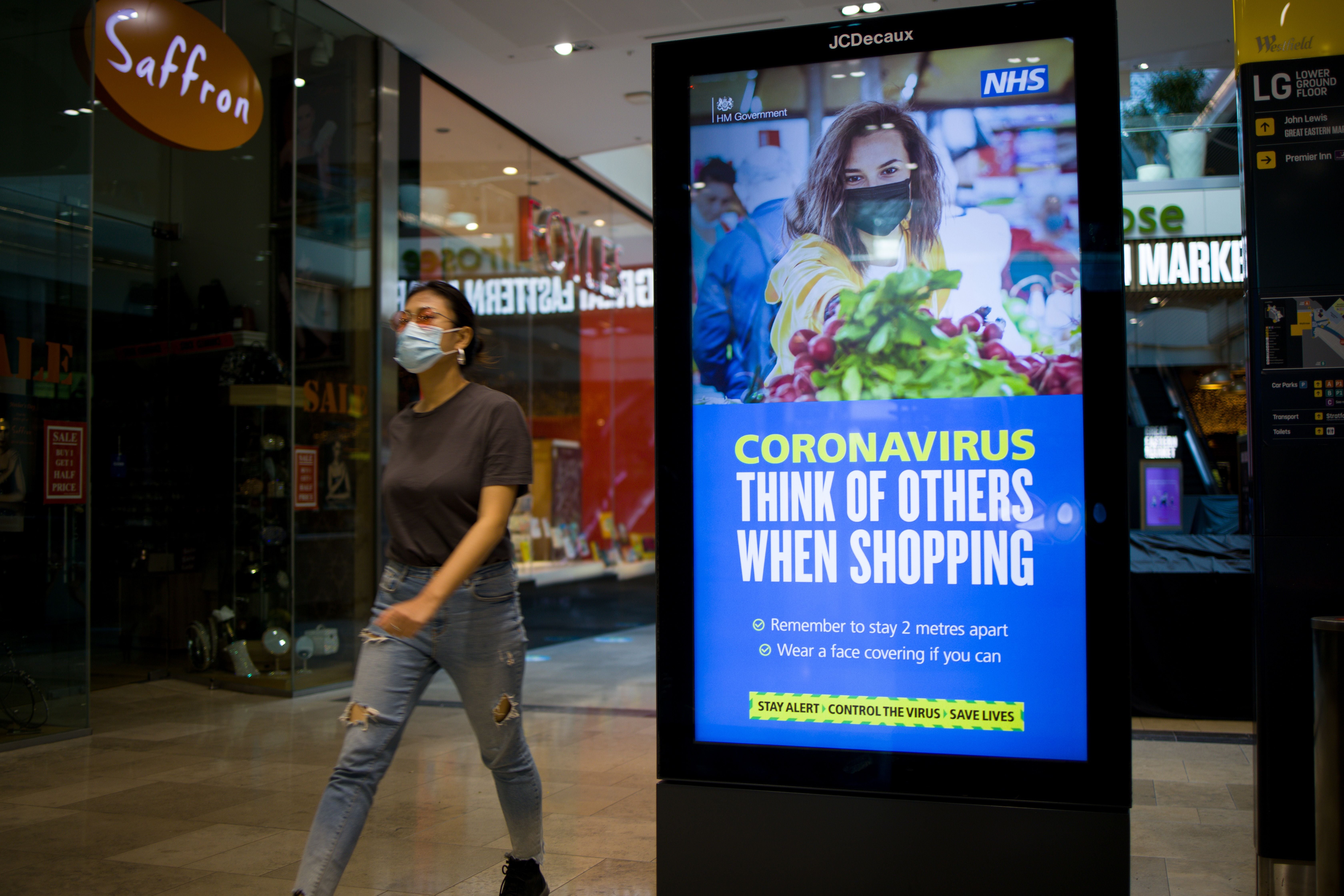England’s Covid R number rises to between 0.9 and 1.2
R number estimate rises from 0.8 to 1.0 last week

Your support helps us to tell the story
From reproductive rights to climate change to Big Tech, The Independent is on the ground when the story is developing. Whether it's investigating the financials of Elon Musk's pro-Trump PAC or producing our latest documentary, 'The A Word', which shines a light on the American women fighting for reproductive rights, we know how important it is to parse out the facts from the messaging.
At such a critical moment in US history, we need reporters on the ground. Your donation allows us to keep sending journalists to speak to both sides of the story.
The Independent is trusted by Americans across the entire political spectrum. And unlike many other quality news outlets, we choose not to lock Americans out of our reporting and analysis with paywalls. We believe quality journalism should be available to everyone, paid for by those who can afford it.
Your support makes all the difference.The coronavirus reproduction rate in England is estimated to have risen to between 0.9 and 1.2, according to official data released on Friday, compared with 0.8 to 1.0 last week.
That means that every 10 people with Covid-19 will, on average, go on to infect between 9 and 12 others.
The latest daily growth rate estimate is -1 per cent to +3 per cent, compared to -4 per cent to 0 per cent in the previous set of figures.
A growth rate of between -1 per cent and +3 per cent means that the number of new cases could broadly remain stable, falling by up to 1 per cent every day or rising by up to 3 per cent every day.
The UK Health Security Agency said that the estimates “represent the transmission of Covid-19 two to three weeks ago, due to the time delay between someone being infected, developing symptoms, and needing healthcare”.
Estimates from the Office for National Statistics (ONS) published on Friday showed that around one in 80 people in private households in England had Covid in the week to 14 August. This is a slight fall from one in 75 in the previous week.
Coronavirus cases in the UK have been rising once more since the beginning of August, after a sustained fall following a peak in mid-July. The seven-day rolling average, which evens out reporting irregularities in the daily figures, shows that cases are up by 7.8 per cent compared with the previous week, while fatalities have risen by 9.6 per cent by the same measure.
A total of 87.3 per cent of people aged 16 and above have had a first dose of a Covid-19 vaccine, while 75.7 per cent have had both shots, according to UK government statistics.
The rising R number comes amid NHS plans to roll out a third vaccine dose from next month for people who may be more vulnerable to becoming ill with Covid-19, despite the protection offered by two shots. Boosters aim to combat waning immunity responses to the virus over time.
Although Sajid Javid, the health secretary, said on Thursday that the scheme will begin “sometime in September”, there have also been reports that it may not go forward this autumn.
The Joint Committee on Vaccination and Immunisation (JCVI) met on Thursday morning to discuss the campaign, and prior to the meeting, JCVI member Prof Adam Finn said it was not yet clear whether booster shots should be administered only to certain groups of people.
Join our commenting forum
Join thought-provoking conversations, follow other Independent readers and see their replies
Comments